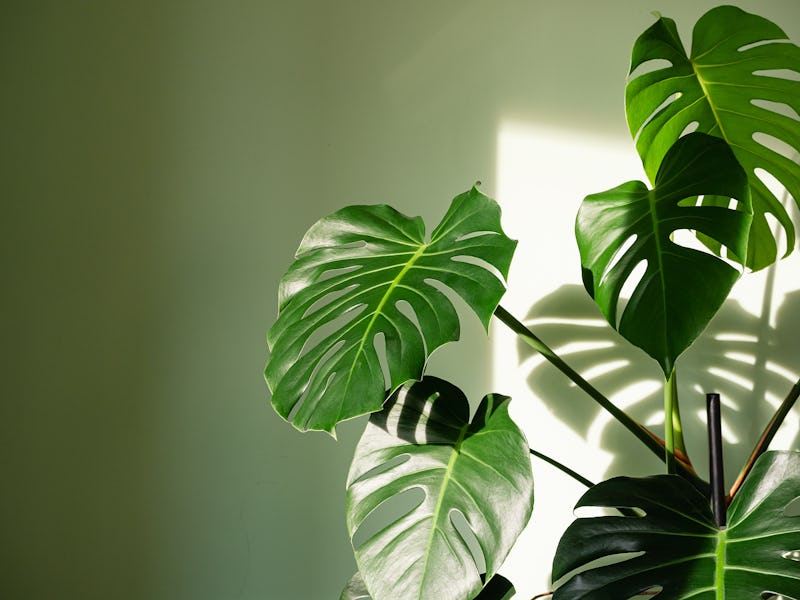Which houseplants purify air? A 1989 NASA study has the answers
Six science-backed plant purifiers could make all the difference to your dank apartment air.

Apartment gardeners rejoice: Going all-out at your local gardening store has science-backed approval.
Houseplants add a pop of color and some (literal) life to a room, but they also have a hidden health benefit.
According to a 1989 NASA study, several houseplant species are particularly adept at cleaning the air in your home, removing pollutants that either originate inside, or slip in from the outside world. Six stuck out in particular: NASA tested snake plants, English ivy, peace lilies, warneckei, golden pothos, and Janet Craig plants, among other plants.
What are the main indoor-air pollutants?
Indoor pollutants have various sources: fuel-burning stoves and other kitchen appliances, smoking tobacco, building materials, and cleaning products all contribute to the dank air you breathe. Outdoor pollution — like pesticides, for example — can also waft their way inside and linger, adding to the miasma.
Poorly ventilated buildings can trap these pollutants inside — leaving you to breathe them in day and night.
Here are just a few of the main pollutants you are unwittingly inhaling at home, according to the United States' Environmental Protection Agency:
- Asbestos
- Carbon monoxide
- Formaldehyde
- Lead
- Nitrogen dioxide
- Pesticides
- Radon
- Indoor particulate matter
- Secondhand smoke
- Volatile organic compounds
How do houseplants purify air?
Like the trees outside your window, houseplants photosynthesize. During this process, they absorb carbon dioxide and release oxygen, a mechanism often characterized as a kind of reverse-breathing.
The best evidence we have that houseplants clean the air inside comes from a seminal 1989 NASA study.
Researchers put the different houseplants inside closed chambers and gassed them with chemicals like benzene, trichloroethylene, and formaldehyde.
These chemical names may be unfamiliar, but they are not rare. Benzene is found in rubber, paints, and also pharmaceuticals, among other common products. Trichloroethylene is used in dry cleaning, but it is also found in printer inks, and other common products like varnishes. Formaldehyde, meanwhile, is often found in particle board (aka, all that flatpack furniture), paper products like tissues and grocery bags.
All of them are linked to health problems both short- and long-term, ranging from nausea to cataracts in later life, from headaches to throat cancer.
After 24 hours of gassing the plants, they tested the air quality in the chamber to see what affect — if any — each plant had on the concentration of the different gasses.
How many plants do you need to make a difference?
The NASA study has an important caveat: The experiment took place in a highly controlled environment — but your home is not a highly controlled environment. So while in theory plants should improve the air quality in your home, if you are hoping to actually feel a difference, you need to stock up.
While plants can remove volatile organic compounds from the air in your home, it's important to remember that the NASA study looked at plants in a closed chamber, says Northwestern University molecular biologist Luyi Cheng.
In your own home, where air flows between the outside and inside, it would take many, many plants — between 10 and 1000 plants per square meter — just to have an effect roughly equivalent to that air flow.
Bill Wolverton, one of the scientists who conducted the 1989 NASA study, told Time magazine in 2018 that he recommends two large plant per 100-square-feet.
But short of cleaning up your air, having plants around can improve your health in other ways, too. Plants lift your mood, ease anxiety, and might even make you more productive. Plus, they're an easy way to beautify while strengthening your connection to nature.
Which kinds of houseplants are best at cleaning the air?
Here is how well each plant performed in the original NASA study (for some plants, the percent of formaldehyde was not given):
Snake plant (Sansevieria trifasciata):
- Removed 52 percent of benzene
- Removed 13 percent of trichloroethylene
Snake plants.
English ivy (Hedera helix):
- Removed nearly 90 percent of benzene
- Removed nearly 11 percent of trichloroethylene
English ivy.
Peace lily (Spathiphyllum):
- Removed nearly 80 percent of benzene
- Removed 23 percent of trichloroethylene
Peace lily.
Golden pothos (Epipremnum aureum)
- Removed 73 percent of benzene
- Removed 9 percent of trichloroethylene
Golden pothos.
Janet Craig plant (Dracaena fragrans):
- Removed nearly 78 percent of benzene
- Removed 17.5 percent of trichloroethylene
Janet Craig plant.
Warneckei (Dracanae variety):
- Removed 70 percent of benzene
- Removed 20 percent of trichloroethylene
- Removed 50 percent of formaldehyde
Warneckei plant.
Can plants help with allergies?
By helping to purify the air in your living space, you might find that plants have a positive effect on your allergies and overall breathing. One thing to keep in mind, however, is that plants can gather dust over time. To make sure you’re not making air quality any worse, it’s important to dust them off every once in a while. You can use water or a mild water-dish soap combination to keep the leaves spiffy clean.